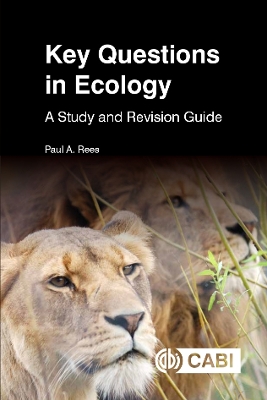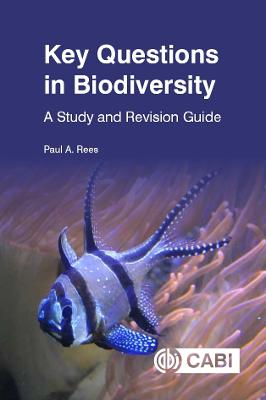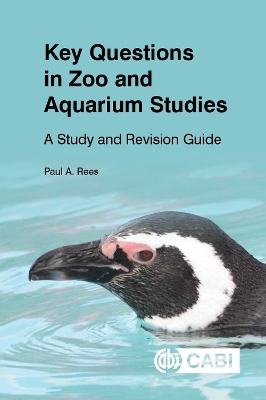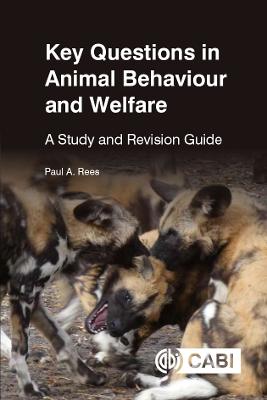Key Questions
5 total works
An understanding of ecology is an important requirement of a wide range of academic areas, including biology, zoology and environmental science. This book is a study and revision guide for students following programmes of study in which ecology is an important component. It contains 600 multiple-choice questions (and answers) set at three levels - foundation, intermediate and advanced - and grouped into 10 major topic areas: · The history and foundations of ecology · Abiotic factors and environmental monitoring · Taxonomy and biodiversity · Energy flow and production ecology · Nutrient and material cycles · Ecophysiology · Population ecology · Community ecology and species interactions · Ecological genetics and evolution · Ecological methods and statistics The book has been produced in a convenient format so that it can be used at any time in any place. It allows the reader to learn and revise the meaning of ecological terms, the basic processes operating in ecosystems, the dynamics of populations, ecological genetics and the process of evolution, the methods used in ecological surveys, and much more. The structure of the book allows the study of one topic area at a time, progressing through simple questions to those that are more demanding. Many of the questions require students to use their knowledge to interpret information provided in the form of graphs, data or photographs, providing a useful tool for independent study.
An understanding of applied ecology and conservation is an important requirement of a wide range of programmes of study including applied biology, ecology, environmental science and wildlife conservation. This book is a study and revision guide for students following such programmes. It contains 600 multiple-choice questions (and answers) set at three levels - foundation, intermediate and advanced - and grouped into 10 major topic areas: History and foundations of applied ecology and conservation Environmental pollution and perturbations Wildlife and conservation biology Restoration biology and habitat management Agriculture, forestry and fisheries management Pest, weed and disease management Urban ecology and waste management Global environmental change and biodiversity loss Environmental and wildlife law and policy Environmental assessment, monitoring and modelling The book has been produced in a convenient format so that it can be used at any time in any place. It allows the reader to learn and revise the meaning of terms used in applied ecology and conservation, study the effects of pollution on ecosystems, the management, conservation and restoration of wildlife populations and habitats, urban ecology, global environmental change, environment law and much more. The structure of the book allows the study of one topic area at a time, progressing through simple questions to those that are more demanding. Many of the questions require students to use their knowledge to interpret information provided in the form of graphs, data or photographs.
An understanding of biodiversity is an important requirement of a wide range of programmes of study including biology, zoology, wildlife conservation and environmental science. This book is a study and revision guide for students following such programmes in which biodiversity is an important component. It contains 600 multiple-choice questions (and answers) set at three levels - foundation, intermediate and advanced - and grouped into 10 major topic areas: 1. Principles of classification and taxonomy 2. Comparative anatomy and physiology 3. Protoctists, monerans, fungi, lichens and acellular organisms 4. 'Lower' plants and pteridophytes 5. Seed-bearing plants 6. Sponges, cnidarians, nematodes and minor animal phyla 7. Platyhelminths, annelids and molluscs 8. Arthropods and echinoderms 9. Fishes, amphibians and reptiles 10. Birds and mammals The book has been produced in a convenient format so that it can be used at any time in any place. It allows the reader to learn and revise the meaning of terms used in animal and plant classification, the principles of comparative physiology, and the characteristics of, and diversity in, the major animal and plant taxa. The structure of the book allows the study of one topic area or group of taxa at a time, progressing through simple questions to those that are more demanding. Many of the questions require students to use their knowledge to identify organisms and biological structures from drawings or photographs.
An understanding of the work of zoos and aquariums is central to many programmes of study in wildlife conservation and more specialised programmes in zoo and aquarium science and management. This book is intended as a study and revision guide for students following these programmes. It contains 600 multiple-choice questions (and answers) set at three levels - foundation, intermediate and advanced - and grouped into 10 major topic areas: 1. History of zoos and aquariums 2. Zoo and exhibit design 3. Aquariums and Aquatic exhibits 4 Visitor studies, zoo education and zoo research 5. Nutrition and food presentation 6 Reproductive biology and genetics 7. Conservation breeding and assisted reproductive technologies 8. Behaviour, training and environmental enrichment 9. Animal welfare and conservation medicine 10. Zoo organisation and regulation The book has been produced in a convenient format so that it can be used at any time in any place. It allows the reader to learn and revise the meaning of terms used in zoo and aquarium biology, the principles of animal husbandry and enclosure design, the behaviour of zoo visitors, the operation of captive breeding programmes, the international organisation of zoos, their legal regulation and much more. The structure of the book allows the study of one topic area at a time, progressing through simple questions to those that are more demanding. Many of the questions require students to use their knowledge to interpret information provided in the form of graphs, diagrams, data or photographs.
An understanding of animal behaviour and welfare is an important requirement of a wide range of programmes of study including biology, zoology, animal welfare, animal behaviour, psychology and zoo biology. This book is intended as a study and revision guide for students following programmes of study in which animal behaviour and welfare are an important component. It contains 600 multiple-choice questions (and answers) set at three levels - foundation, intermediate and advanced - and grouped into 10 major topic areas: 1. Foundations and history of animal behaviour and welfare 2. Basic concepts and mechanisms in behaviour 3. Biological basis of behaviour 4. Learning, memory and training 5. Territoriality, navigation and migration 6 Animal cognition and communication 7. Behavioural ecology and social behaviour 8. Measuring, recording and analysing animal behaviour and welfare 9. Animal exploitation and welfare 10 Animal rights, ethics and law The book has been produced in a convenient format so that it can be used at any time in any place. It allows the reader to learn and revise the meaning of terms used in the study of animal behaviour and welfare, methods of recording behaviour and assessing welfare, the physiology of behaviour, learning, memory, cognition, behavioural ecology, animal rights and much more. Many of the questions require students to use their knowledge to interpret information provided in the form of graphs, data or photographs.




